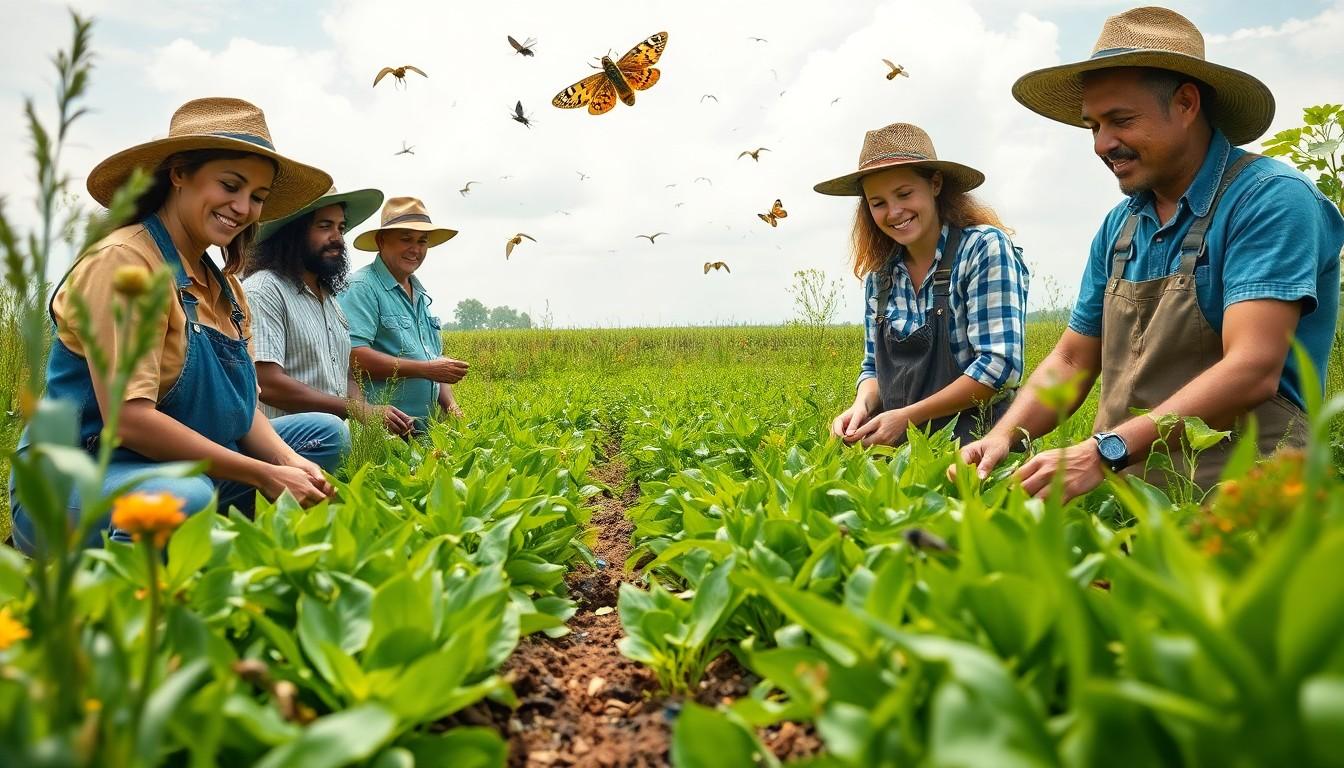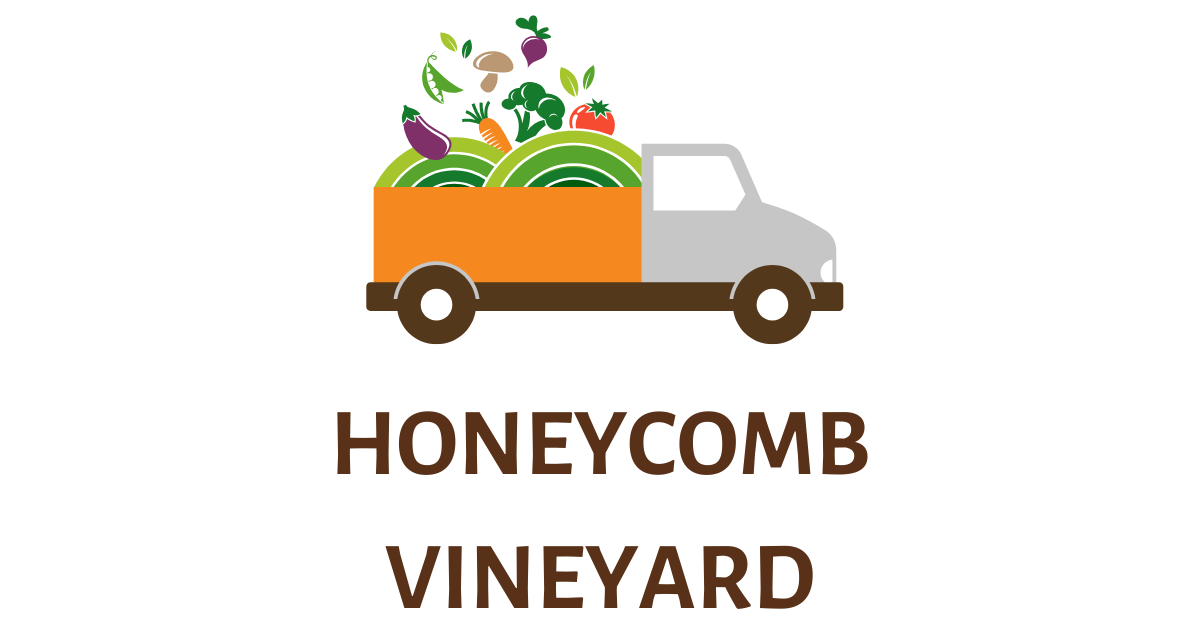The Best Fluffy Pancakes recipe you will fall in love with. Full of tips and tricks to help you make the best pancakes.

Regenerative Agriculture Jobs: Secure Your Future in Sustainable Farming Today
Regenerative agriculture might sound like a fancy term reserved for eco-warriors in Birkenstocks, but it’s much more than that. Imagine farming that not only feeds the world but also heals the planet. This innovative approach goes beyond sustainability, focusing on restoring soil health, enhancing biodiversity, and sequestering carbon. It’s like giving Mother Earth a spa day while growing delicious veggies!
Regenerative Agriculture Jobs
Regenerative agriculture is an innovative farming strategy focused on restoring ecosystems while producing food. This method enhances soil health, promotes biodiversity, and captures carbon effectively.
Key Principles of Regenerative Agriculture
Diverse crop rotations improve soil structure and nutrient availability. Cover crops protect the soil from erosion and enhance its organic matter. Reduced tillage practices maintain soil integrity and minimize disturbance. Integrating livestock provides natural fertilization and aids in nutrient cycling. These interconnected practices create a resilient agricultural system.
Importance of Soil Health
Soil health serves as the foundation for regenerative agriculture. Healthy soil supports robust plant growth and increases crop yields. By improving soil structure, farmers can enhance water retention and reduce runoff. Ensuring a rich microbial ecosystem fosters nutrient availability, essential for plant vitality. Ultimately, prioritizing soil health contributes to long-term agricultural sustainability and environmental restoration.
Benefits of Regenerative Agriculture

Regenerative agriculture offers numerous benefits that extend beyond traditional farming practices. It impacts the environment and economy significantly.
Environmental Benefits
Soil health improves through regenerative practices, boosting organic matter and microbial diversity. Enhanced biodiversity supports resilient ecosystems, allowing crops to thrive. Carbon sequestration occurs effectively, with soils capturing atmospheric CO2, mitigating climate change. Water retention also increases, reducing the likelihood of drought and enhancing water quality. Nutrient cycling improves, minimizing the reliance on synthetic fertilizers, leading to cleaner waterways. Habitat creation benefits wildlife, fostering a balanced environment. Community engagement strengthens relationships between farmers and consumers, promoting sustainable choices.
Economic Benefits
Farmers experience increased profitability due to higher yields from healthier soils. Crop diversity leads to market resilience, offering opportunities for specialty crops. Input costs decrease as synthetic fertilizers and pesticides are less dependent on regenerative practices. Long-term sustainability reduces risk while enhancing land value over time. Consumers often show a willingness to pay premiums for sustainably produced goods, benefiting both farmers and local economies. Employment opportunities arise from the adoption of diverse agricultural practices, fostering community development.
Techniques Used in Regenerative Agriculture
Regenerative agriculture employs various techniques that enhance soil health, increase biodiversity, and strengthen ecosystems. These methods foster sustainability while producing nutritious crops.
Crop Rotation
Crop rotation involves systematically changing the types of crops grown in a specific area over several seasons. This practice helps manage soil fertility and pest cycles. Alternating crops reduces nutrient depletion and minimizes the risk of disease, promoting healthier plants. For example, integrating legumes with cereals replenishes nitrogen levels in the soil. Diverse crop combinations enhance ecosystem resilience, leading to improved yields and reduced need for synthetic fertilizers.
Cover Cropping
Cover cropping utilizes specific plant varieties to cover soil during off-seasons. These crops protect against erosion, suppress weeds, and improve soil structure. By incorporating deep-rooted species, farmers enhance nutrient cycling and moisture retention in the soil. Additionally, cover crops increase organic matter, which supports beneficial microorganisms. The practice results in healthier soil ecosystems and contributes positively to crop productivity in subsequent growing seasons.
Agroforestry
Agroforestry integrates trees and shrubs within agricultural landscapes. This technique fosters interactions between plants and animals, creating multifunctional ecosystems. Trees provide shade and habitat, while their root systems enhance soil stability. Additionally, agroforestry contributes to carbon sequestration and biodiversity conservation, offering economic benefits through timber and fruit production. By diversifying crop systems, farmers increase resilience against climate variability and improve overall farm sustainability.
Challenges and Considerations
Adopting regenerative agriculture presents several challenges that farmers and stakeholders must navigate.
Scaling Up Regenerative Practices
Scaling regenerative agriculture practices often encounters hurdles due to knowledge gaps. Many farmers lack access to training on these methods. Transitioning from conventional to regenerative systems requires adjustments in farming strategies. Financial constraints impede investment in new technologies. Collaboration among farmers and organizations fosters knowledge sharing, essential for scaling efforts. Incentive programs can motivate adoption at a larger scale.
Access to Resources
Access to resources constitutes a critical challenge in implementing regenerative agriculture. Limited availability of quality seeds and organic inputs affects farmers’ ability to practice regeneration effectively. Infrastructure for transporting goods can hinder market access for sustainably produced crops. Financial resources often fall short, preventing farmers from investing in regenerative techniques. Local and regional support networks play a vital role in providing necessary resources. Establishing connections with agricultural cooperatives can enhance resource access and encourage collaborative projects.
Sustainable Pathway
Regenerative agriculture represents a pivotal shift in how food is produced while nurturing the planet. By focusing on soil health and biodiversity it offers a sustainable pathway that benefits both the environment and the economy. This holistic approach not only enhances crop yields but also fosters resilient ecosystems capable of withstanding climate challenges.
As awareness grows about the importance of sustainable practices farmers are increasingly adopting regenerative techniques. The potential for community development and improved consumer relationships further underscores its significance. Embracing regenerative agriculture is not just a trend; it’s a necessary evolution toward a healthier planet and a sustainable food system for future generations.
